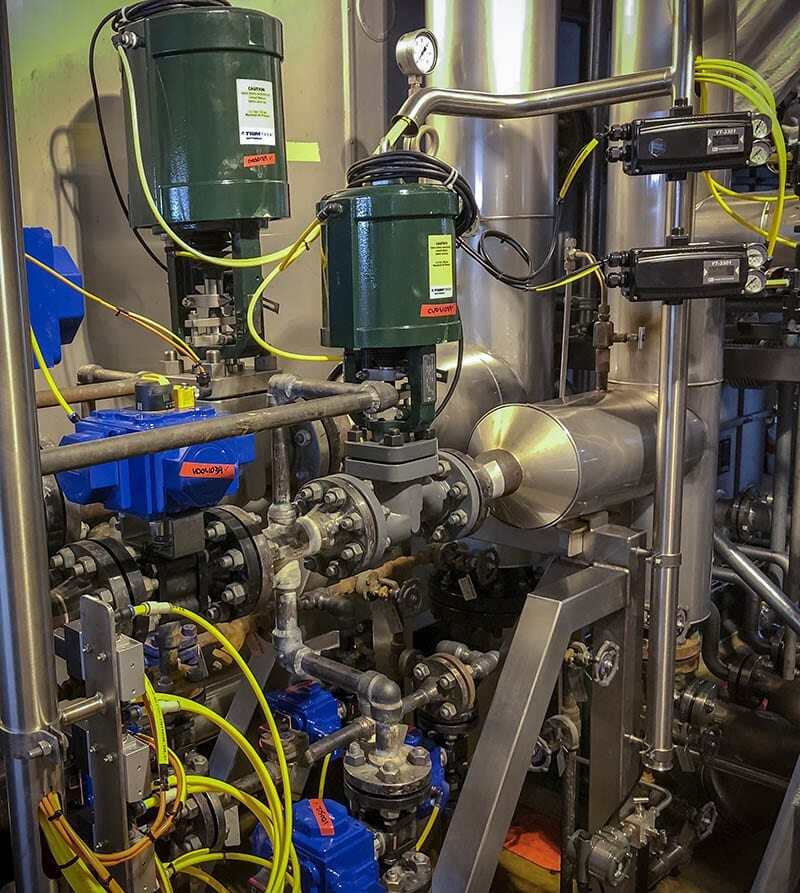Control Valves 101: Types of Actuators
All actuators enable the automation of control valves, to keep critical processes flowing. But, not all actuators are designed to do this in the same way. Emergency shutdown valves will need a different type of actuator than a flow-modulating valve, for example. The type of energy input that dictates an actuator’s movement matters too.
If you need a refresher on the core characteristics of actuators, that’s what this latest post in our “Control Valves 101” series is for. We’re going to walk you through the two main types of actuators and the advantages and disadvantages of each of their subtype designs.
Types of actuators
Different services will need a specific type of actuator for their control valves, based on factors like system pressure and accuracy requirements. But, they are broadly split into two groups based on the way they achieve motion. These groups are pneumatic and non-pneumatic actuators.
Pneumatic actuators
Pneumatic actuators use compressed air or compressed inert gas to achieve the motion they need to adjust the valve-stem position. There are different subtypes of pneumatic actuators that align with the classification criteria for control valves to ensure optimal system performance.
- Diaphragm actuators have a simple design that is relatively inexpensive and responds quickly to signals. They’re suited to low-pressure ranges, where high levels of thrust aren’t required. They are limited by their stroke, stiffness and larger height and weight. And, they’re not field-reversible, so maintenance is time-consuming. They also don’t have enough power to prevent the “bathtub stopper effect. This is a phenomenon where the actuator’s response to a signal resembles the unstable, wobbly motion of a bathtub stopper as it’s raised from or lowered into the plughole. This effect can have implications for control system performance, particularly if precise or rapid actuator response is crucial.
- Piston-cylinder actuators outperform diaphragm actuators in most ways. They have higher thrust capability and they’re compact and lightweight. They also boast longer and faster strokes for more precise valve-stem positioning. They have greater stiffness to avoid the “bathtub stopper effect” and they’re field reversible for easier maintenance.
- Rack and pinion actuators are suitable for both on/off and modulating control applications, contrary to common misconceptions. They are highly durable with a long cycle life, which makes them very cost-effective. Their casing materials can vary and they’re field reversible for easier maintenance. Some suggest that mechanical backlash is an issue for rack and pinion actuators. But, backlash between racks and pinion is minimal and a clamping device ensures no backlash between the actuator pinion and control valve shaft.
- Rack and gear actuators are rugged all-rounders that can handle a range of requirements. They’re designed for low friction, high temperatures, and have exceptional throttling control capability. They also have options for low-pressure and high-speed requirements. Their offset pistons eliminate internal cantilever loads, which helps reduce wear and tear. On top of that, they’re easy to install and maintain and are field-reversible.
- Heavy-duty scotch yoke actuators are ideal for heavy-duty applications, particularly emergency shutdown valves. If you have large valves with high breakout torque requirements and pressure ranges, they’re an excellent option. They only need simple and infrequent maintenance and have been known to achieve one million cycles.

Cross-section of a diaphragm actuator
.jpg?width=300&height=300&name=1-OpTK-Linear-Piston-Cylinder-Actuator-G2a-675x674%20(1).jpg)
Cross-section of Trimteck’s OpTK™ Linear Piston-Cylinder Actuator
.png?width=300&height=300&name=Untitled%20(5).png)
Cross-section of Trimteck’s OpRPA™ High Performance Rack & Pinion Actuator
.png?width=300&height=300&name=Untitled%20(6).png)
Trimteck’s OpSY™ Scotch Yoke Type Actuator
Non-pneumatic actuators
Non-pneumatic actuators use a different form of energy to change the valve-stem position—either electricity or hydraulics.
- Electromechanical actuators have a high degree of stability, constant thrust, and extraordinary stiffness thanks to the nature of their energy input (electricity). You don’t have to worry about power failure affecting the valve-stem position, as these actuators will fail “in place” if power is lost. They’re a great solution for remote, solar-powered applications. There are some downsides, including their complexity, slower speeds and higher relative cost to pneumatic actuators. They are also not recommended for flammable atmospheres as they generate heat.
- Hydraulic and electro-hydraulic actuators have exceptional stiffness due to the incompressibility of their liquid energy input. They’re used in valves with low rangeability and their fast stroking systems make them ideal for safety management systems. However, they’re not suitable for every process control system. This is because they’re expensive, bulky and complex. They also require specialized engineering to install and maintain.
.png?width=300&height=207&name=Untitled%20(7).png)
An electromechanical actuator

A cross-section of an electro-hydraulic actuator
Selecting the best actuator for your system
To fully optimize the function of your control valves, you need the right actuators. To specify what you need, you’ll have to evaluate the full extent of your requirements. This includes stiffness, resolution, and flow capacity, but also the overall needs of your service, such as temperature and response time.
At Trimteck, we know that this process can eat up time you could invest elsewhere. That’s why we take on the evaluation work in our quoting process. Either share your specs with one of our Applications Engineers or use our AccuValve™ software to gather that information for you. Start your quote right here.


